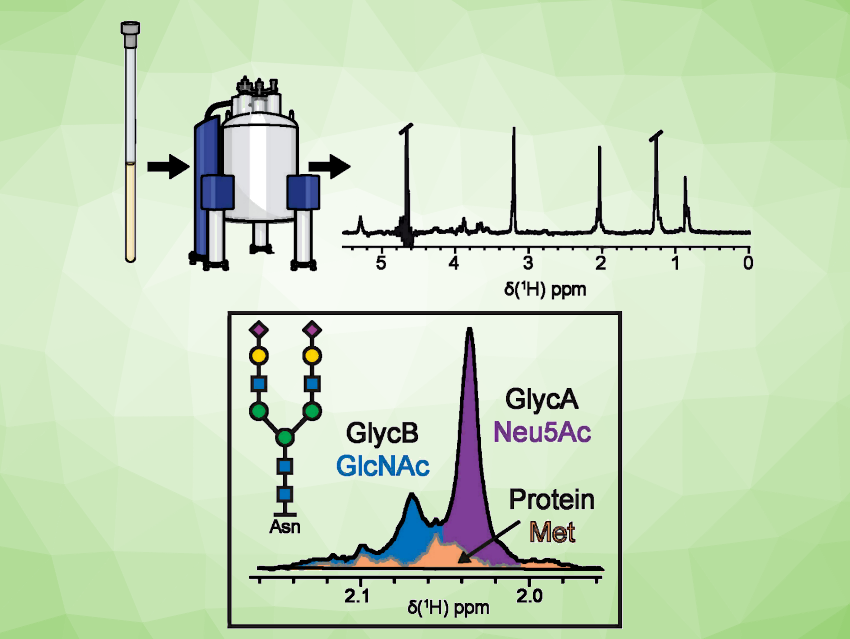The analysis of all small molecules in an organism, i.e., the metabolome, has huge potential for medical diagnostics. Alvaro Mallagaray, Ulrich L. Günther University of Lübeck, Germany, and colleagues have used nuclear magnetic resonance (NMR) spectrometry to quantify acute-phase proteins from serum samples that act as markers for inflammatory diseases. They successfully obtained several diagnostic parameters from a single, short NMR experiment.
Metabolomic Analysis
In addition to genomics and proteomics, metabolomics is becoming established as another mainstay of medical research and diagnosis. Bodily fluids like blood are highly complex mixtures of only partially known compounds. Metabolomic analysis is, thus, correspondingly difficult and complex. The team used advanced NMR techniques to link the metabolomes of cells and organisms to diseases.
NMR spectroscopy is based on the behavior of magnetically active atomic nuclei, primarily hydrogen (1H) and carbon (13C) under the influence of a strong external magnetic field, which varies depending on the atoms’ chemical environment. In medical diagnosis, this principle is also used in the form of magnetic resonance imaging (MRI) to image tissue.
Inflammation Markers
In prior studies, NMR measurements of blood serum showed acetyl resonances of N-acetylated carbohydrates, which are linked to acute-phase glycoproteins. These carbohydrate-containing proteins arise in cases of strong immune responses to acute inflammation. Changes in the concentration of these proteins and their glycosylation pattern, i.e., the type, number, and arrangement of the carbohydrate building blocks, can vary depending on the disease in question.
The team used a series of different NMR methods to assign the NMR signals of human serum. This led them to the conclusion that two characteristic signals termed GlycA and B arise from glycans from acute-phase proteins. The two signals stem from N-acetylneuraminic acid and N-acetylglucosamine building blocks, respectively. Using diffusion-edited NMR experiments, the researchers showed that the components of these signals can be tied to specific, acute-phase proteins.
Diagnostic Applications
NMR spectra allow for the simultaneous quantification of several acute-phase inflammation proteins,” according to Günther. “A proteo-metabolomic NMR signature of significant diagnostic potential is obtained within 10 to 20 minutes.”
The team studied serum samples from patients with COVID-19 or cardiogenic shock, a dangerous side effect of heart attacks. In comparison to samples from healthy individuals, they found significant changes in various specific acute-phase proteins in the serum. “In the case of Parkinson’s disease, our method provides a yes/no diagnosis, as Parkinson’s patients have a very specific glycosylation in their blood that does not occur in healthy people,” Günther adds.
- Towards a Precise NMR Quantification of Acute Phase Inflammation Proteins from Human Serum,
Alvaro Mallagaray, Lorena Rudolph, Melissa Lindloge, Jarne Mölbitz, Henrik Thomsen, Franziska Schmelter, Mohamad Ward Alhabash, Mohammed R. Abdullah, Roza Saraei, Marc Ehlers, Tobias Graf, Christian Sina, Astrid Petersmann, Matthias Nauck, Ulrich L. Günther,
Angew. Chem. Int. Ed. 2023.
https://doi.org/10.1002/anie.202306154




